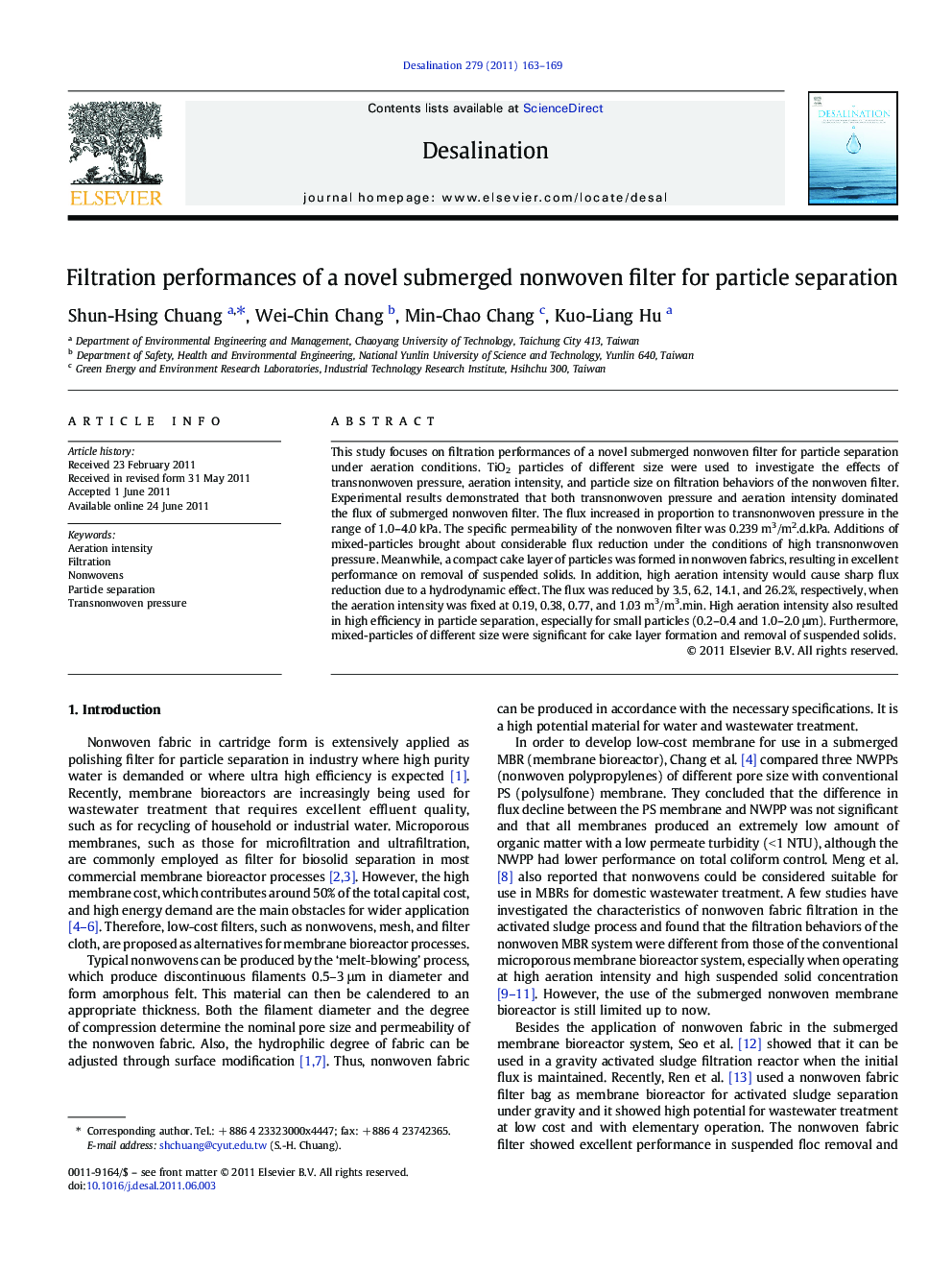| Article ID | Journal | Published Year | Pages | File Type |
|---|---|---|---|---|
| 624897 | Desalination | 2011 | 7 Pages |
This study focuses on filtration performances of a novel submerged nonwoven filter for particle separation under aeration conditions. TiO2 particles of different size were used to investigate the effects of transnonwoven pressure, aeration intensity, and particle size on filtration behaviors of the nonwoven filter. Experimental results demonstrated that both transnonwoven pressure and aeration intensity dominated the flux of submerged nonwoven filter. The flux increased in proportion to transnonwoven pressure in the range of 1.0–4.0 kPa. The specific permeability of the nonwoven filter was 0.239 m3/m2.d.kPa. Additions of mixed-particles brought about considerable flux reduction under the conditions of high transnonwoven pressure. Meanwhile, a compact cake layer of particles was formed in nonwoven fabrics, resulting in excellent performance on removal of suspended solids. In addition, high aeration intensity would cause sharp flux reduction due to a hydrodynamic effect. The flux was reduced by 3.5, 6.2, 14.1, and 26.2%, respectively, when the aeration intensity was fixed at 0.19, 0.38, 0.77, and 1.03 m3/m3.min. High aeration intensity also resulted in high efficiency in particle separation, especially for small particles (0.2–0.4 and 1.0–2.0 μm). Furthermore, mixed-particles of different size were significant for cake layer formation and removal of suspended solids.
Research highlights► Pressures and aeration intensity dominate the flux of submerged nonwoven filter. ► Additions of mixed-particles bring considerable flux reduction under high pressures. ► High aeration intensity causes sharp flux reduction due to a hydrodynamic effect. ► High aeration intensity results in high efficiency in small particle separation. ► Particle size only demonstrates a slight impact on flux.
